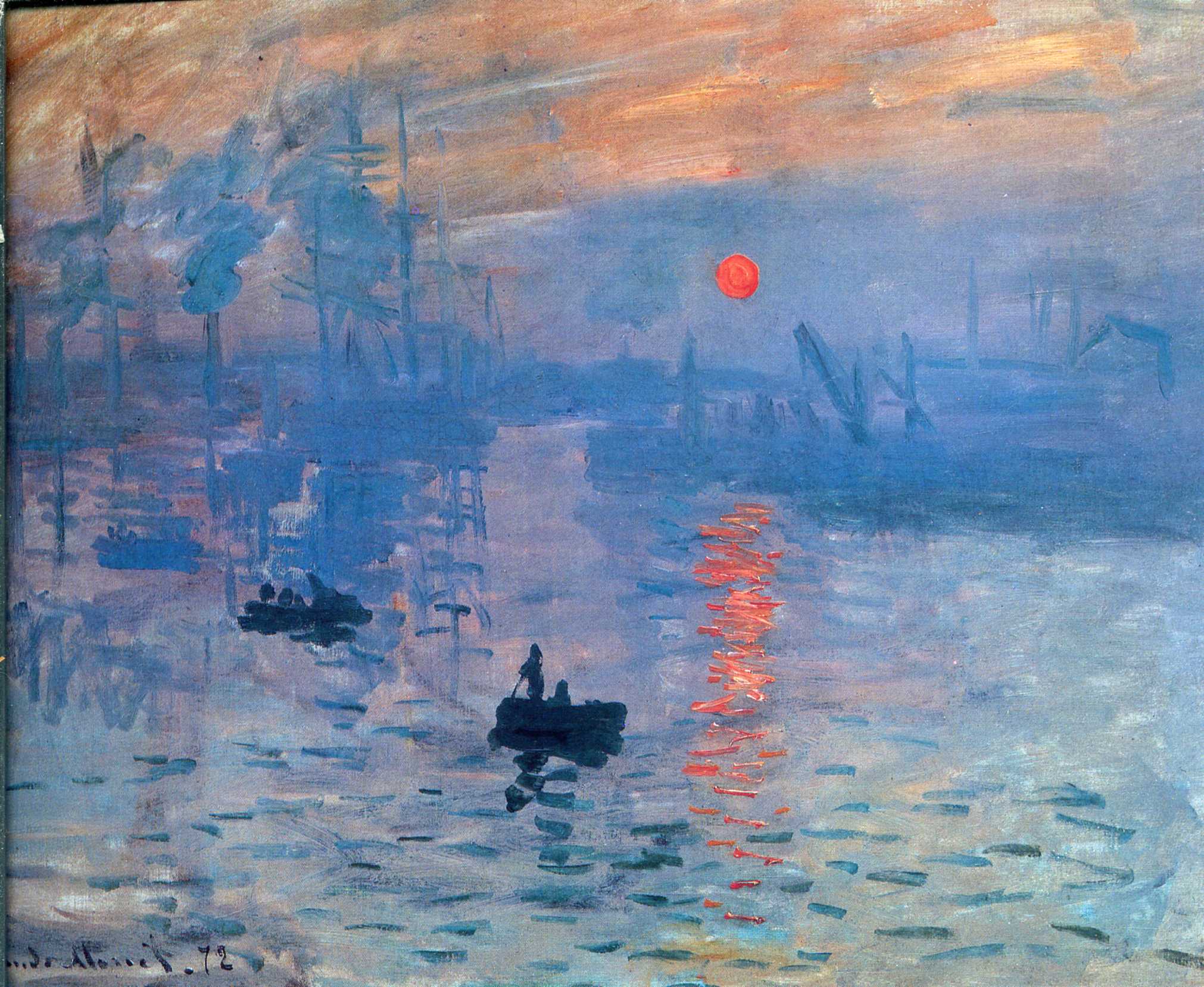artsMonet.com
Claude Monet 1840-1926
Claude Monet - Impression, sunrise 1872
 Impression, sunrise |
Dated 1872, its subject is the harbour of Le Havre in France, using very loose brush strokes that suggest rather than delineate it. Monet explained the title later:
Landscape is nothing but an impression, and an instantaneous one, hence this label that was given us, by the way because of me. I had sent a thing done in Le Havre, from my window, sun in the mist and a few masts of boats sticking up in the foreground. ... They asked me for a title for the catalogue, it couldn't really be taken for a view of Le Havre, and I said: 'Put Impression.'
It was first displayed in 1874 during the first independent art show of the Impressionists (who were not yet known by that name). Critic Louis Leroy, inspired by the painting's name, titled his hostile review of the show in Le Charivari newspaper, "The Exhibition of the Impressionists", thus inadvertently naming the new art movement. He wrote:
Impression—I was certain of it. I was just telling myself that, since I was impressed, there had to be some impression in it … and what freedom, what ease of workmanship! Wallpaper in its embryonic state is more finished than that seascape.
The painting was stolen from the Musée Marmottan Monet in 1985 by Philippe Jamin and Youssef Khimoun but recovered in 1990.Since 1991 it has been back on display in the museum.
From Wikipedia, the free encyclopedia:
Impression, Sunrise depicts the port of Le Havre at sunrise, the two small rowboats in the foreground and the red sun being the focal elements. In the middle ground, more fishing boats are included, while in the background on the left side of the painting are clipper ships with tall masts. Behind them are other misty shapes that "are not trees but smoke stacks of packboats and steamships, while on the right in the distance are other masts and chimneys silhouetted against the sky." In order to show these features of industry, Monet eliminated existing houses on the left side of the jetty, leaving the background unobscured.
Following the defeat of France in the Franco-Prussian War of 1870-71, the regeneration of France was exemplified in the thriving port of Le Havre. Art historian Paul Tucker suggests that the contrast of elements like the steamboats and cranes in the background to the fishermen in the foreground represent these political implications: "Monet may have seen this painting of a highly commercial site as an answer to the postwar calls for patriotic action and an art that could lead. For while it is a poem of light and atmosphere, the painting can also be seen as an ode to the power and beauty of a revitalized France."
The representation of Le Havre, hometown of Monet and a center of industry and commerce, celebrates the "renewed strength and beauty of the country... Monet’s ultimate utopian statement." Art demonstrating France’s revitalization, Monet’s depiction of Le Havre’s sunrise mirrors the renewal of France.